Abstract
A field study was undertaken in Tampa, Fla., to assess the efficacy of subcutaneous and aerosol methods of administering vaccine, and to compare the protection afforded by bivalent (A2 and B) influenza virus vaccine and by A2/Hong Kong/68 virus vaccine. Further objectives of the study included a comparison of the effectiveness of single-dose and 2-dose immunization. Approximately 2100 volunteers received, in a double-blind manner, both an injection and an aerosol administration on 2 occasions 3 weeks apart. The results showed that aerosol administration gave a lower over-all protection rate, although the booster dose seemed to have a marked effect. The protection afforded by A2/Hong Kong/68 virus vaccine was considerably greater than that afforded by the bivalent vaccine, particularly when administration was subcutaneous. Results are also given on the occurrence of side-effects and on the correlation between cigarette smoking and the occurrence of influenza-like illness.
Full text
PDF
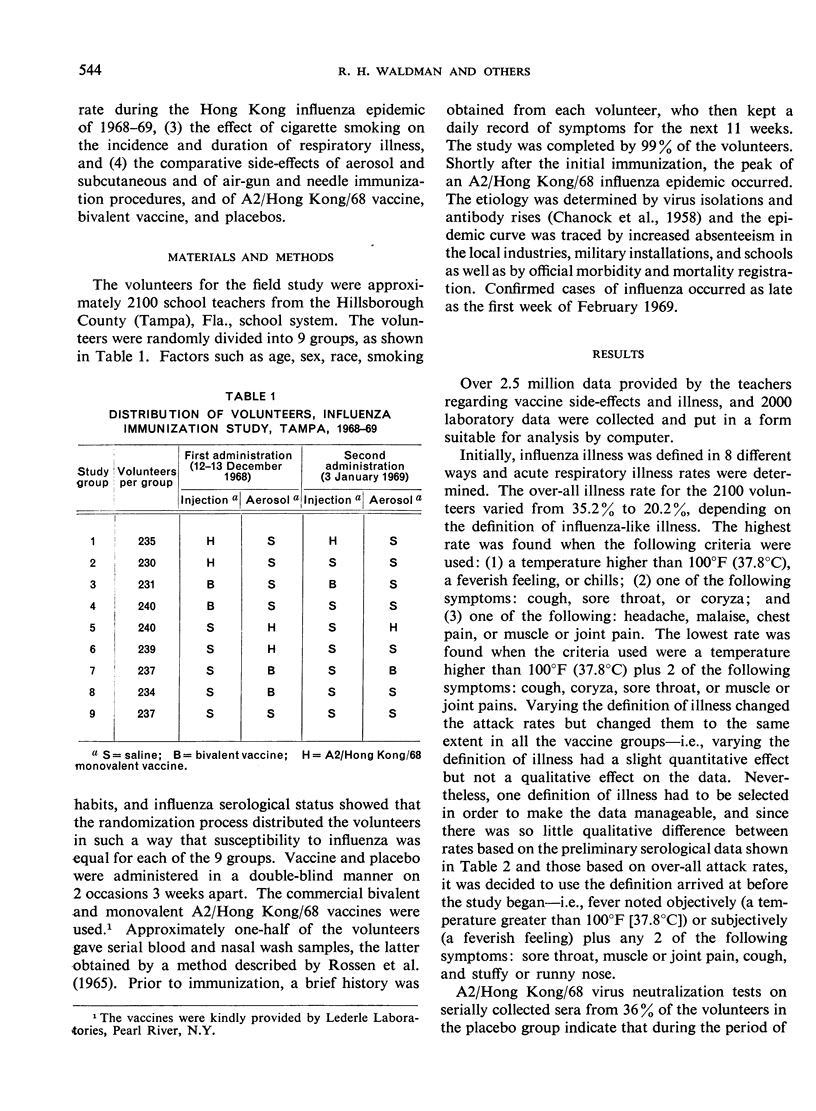
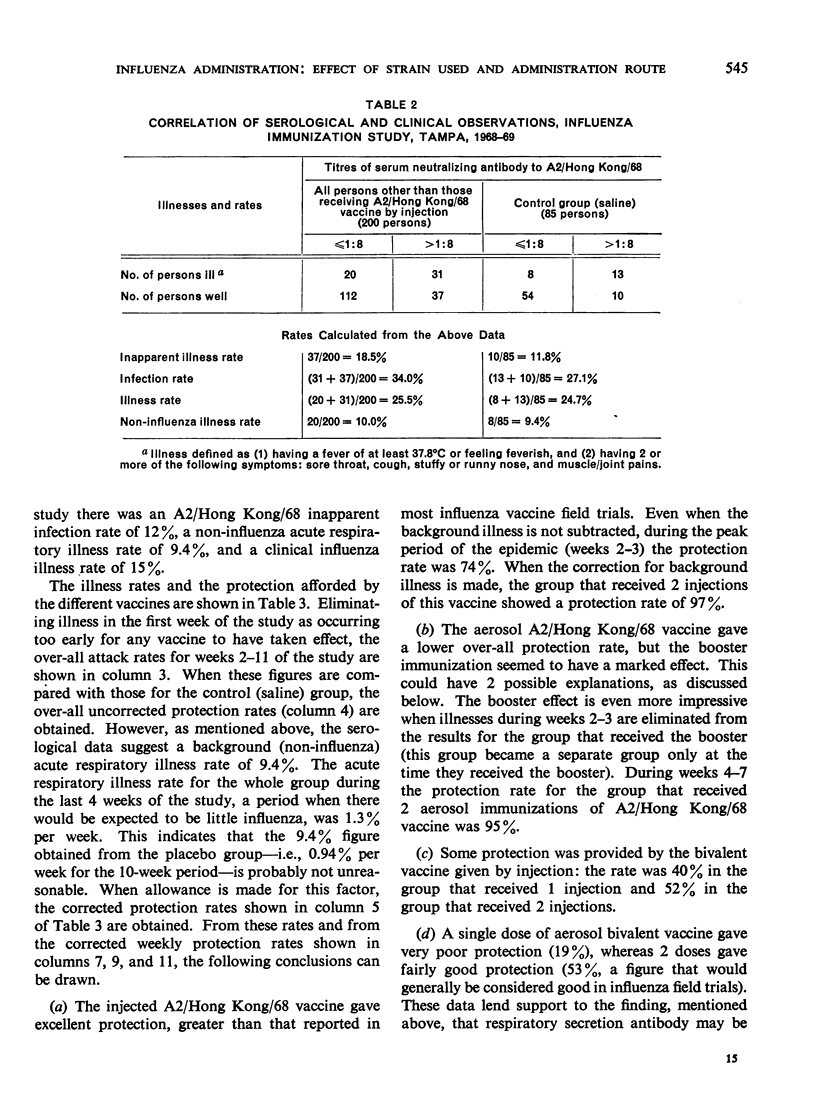
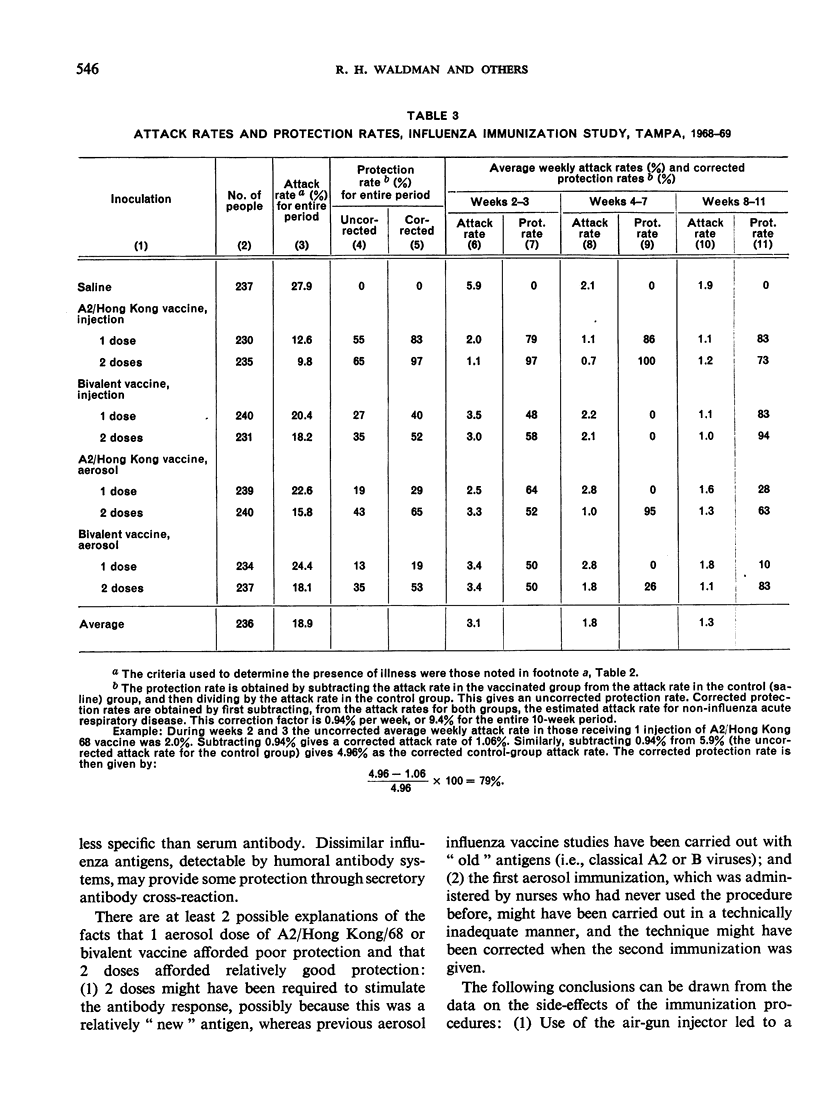
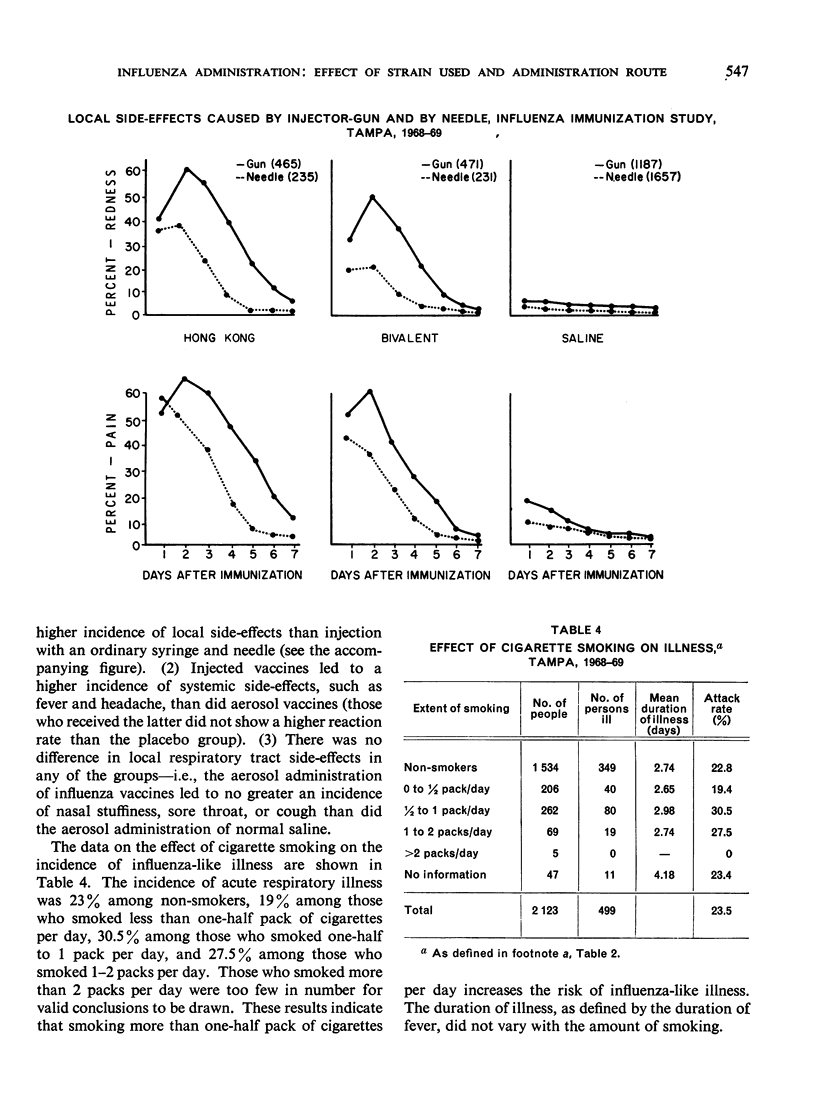
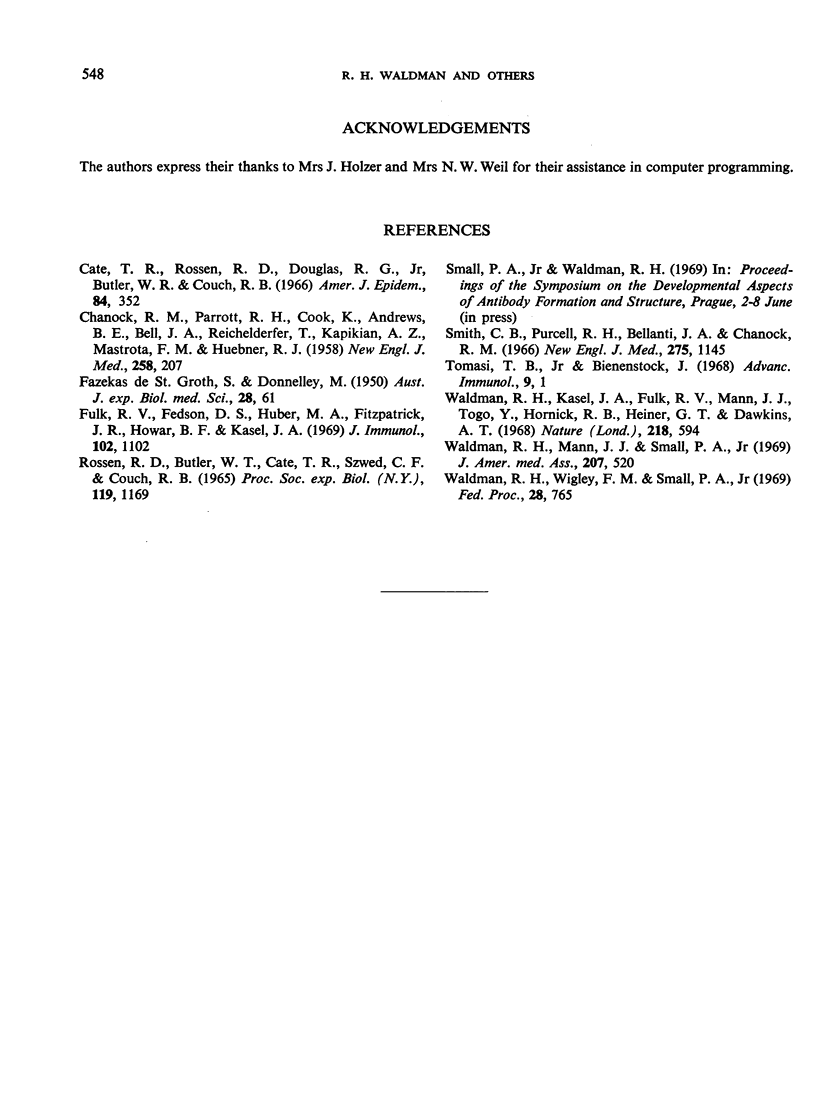
Selected References
These references are in PubMed. This may not be the complete list of references from this article.
- CHANOCK R. M., PARROTT R. H., COOK K., ANDREWS B. E., BELL J. A., REICHELDERFER T., KAPIKIAN A. Z., MASTROTA F. M., HUEBNER R. J. Newly recognized myxoviruses from children with respiratory disease. N Engl J Med. 1958 Jan 30;258(5):207–213. doi: 10.1056/NEJM195801302580502. [DOI] [PubMed] [Google Scholar]
- Cate T. R., Rossen R. D., Douglas R. G., Jr, Butler W. T., Couch R. B. The role of nasal secretion and serum antibody in the rhinovirus common cold. Am J Epidemiol. 1966 Sep;84(2):352–363. doi: 10.1093/oxfordjournals.aje.a120648. [DOI] [PubMed] [Google Scholar]
- Fulk R. V., Fedson D. S., Huber M. A., Fitzpatrick J. R., Howar B. F., Kasel J. A. Antibody responses in children and elderly persons following local or parenteral administration of an inactivated influenza virus vaccine, A2-Hong Kong-68 variant. J Immunol. 1969 Apr;102(4):1102–1105. [PubMed] [Google Scholar]
- Kasel J. A., Fulk R. V., Togo Y., Hornick R. B., Heiner G. G., Dawkins A. T., Jr, Mann J. J. Influenza antibody in human respiratory secretions after subcutaneous or respiratory immunization with inactivated virus. Nature. 1968 May 11;218(5141):594–595. doi: 10.1038/218594a0. [DOI] [PubMed] [Google Scholar]
- Rossen R. D., Butler W. T., Cate T. R., Szwed C. F., Couch R. B. Protein composition of nasal secretion during respiratory virus infection. Proc Soc Exp Biol Med. 1965 Aug-Sep;119(4):1169–1176. doi: 10.3181/00379727-119-30406. [DOI] [PubMed] [Google Scholar]
- Smith C. B., Purcell R. H., Bellanti J. A., Chanock R. M. Protective effect of antibody to parainfluenza type 1 virus. N Engl J Med. 1966 Nov 24;275(21):1145–1152. doi: 10.1056/NEJM196611242752101. [DOI] [PubMed] [Google Scholar]
- Waldman R. H., Mann J. J., Small P. A., Jr Immunization against influenza. Prevention of illness in man by aerosolized inactivated vaccine. JAMA. 1969 Jan 20;207(3):520–524. doi: 10.1001/jama.207.3.520. [DOI] [PubMed] [Google Scholar]


